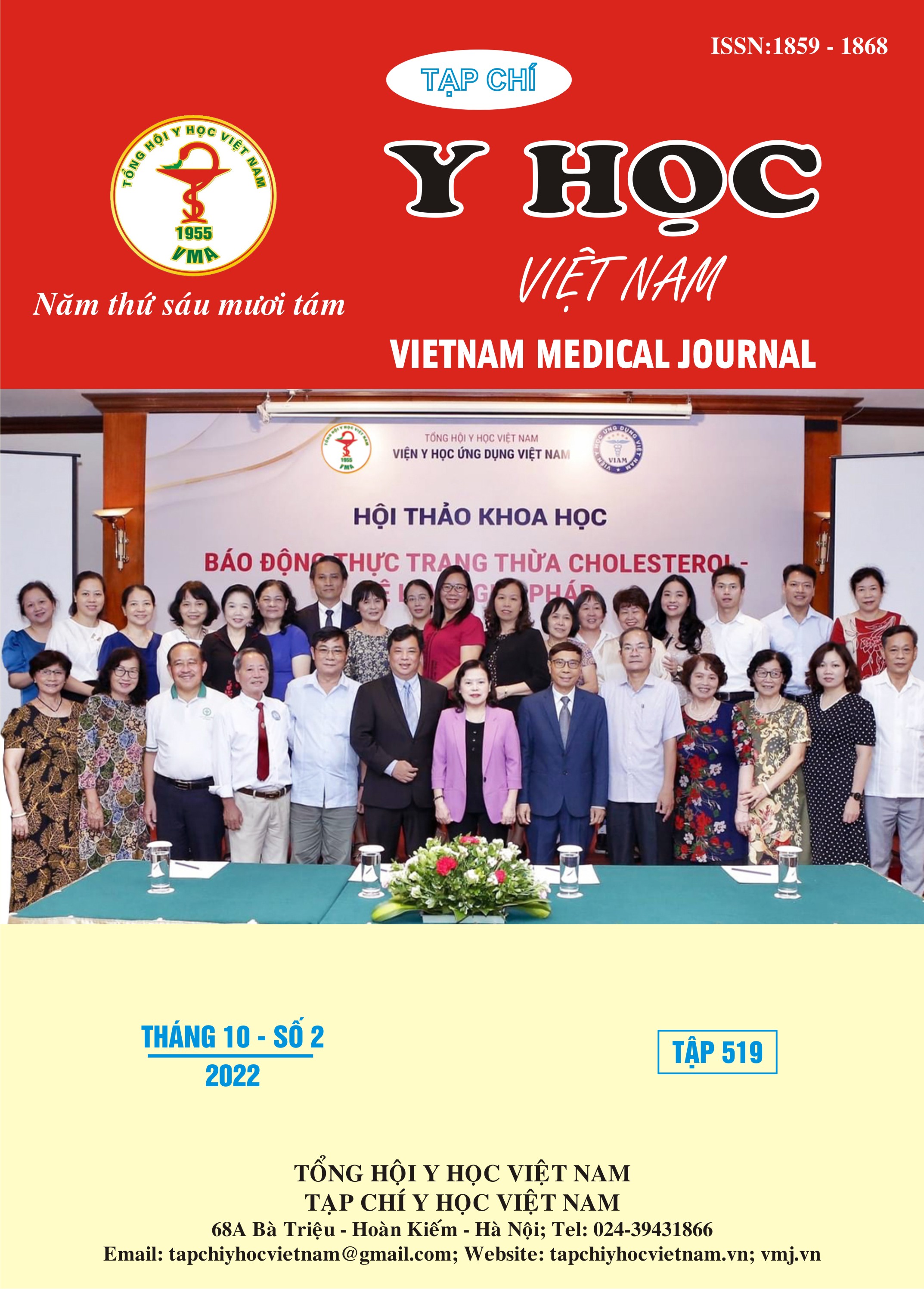ĐÁNH GIÁ HIỆU QUẢ CHẠY THẬN NHÂN TẠO THÔNG QUA KT/V TRÊN BỆNH NHÂN CHẠY THẬN NHÂN TẠO ĐỊNH KỲ TẠI KHOA THẬN NHÂN TẠO BỆNH VIỆN CHỢ RẪY
Nội dung chính của bài viết
Tóm tắt
Đánh giá hiệu quả sự thanh thải của urê trong chạy thận nhân tạo (CTNT) bằng chỉ số spKt/V là cần thiết trong điều trị bệnh nhân mắc bệnh thận mạn giai đoạn cuối (BTMGĐC), với nhiều phương pháp đánh giá sẽ giúp nhà chuyên môn lựa chọn phương án tối ưu nhất trong điều trị bệnh lý này. Nghiên cứu được thực hiện nhằm đánh giá hiệu quả CTNT bằng cách so sánh chỉ số spKt/V ở phương pháp đo trực tiếp trên máy và phương pháp tính toán theo công thức Daugridas. Nghiên cứu mô tả cắt ngang được thực hiện trên 175 bệnh nhân mắc BTMGĐC đang lọc máu tại bệnh viện Chợ Rẫy từ tháng 1-6/2022, chỉ số spKt/V được đo bằng hai phương pháp trên và tính giá trị trung bình, sử dụng kiểm định Willcoxon signrank để so sánh 2 giá trị đó. Kết quả cho thấy chỉ số trung bình spKt/V ở phương pháp đo trực tiếp trên máy (1,77 (1,5 - 2,06)) và phương pháp tính toán bằng công thức Daugridas (1,6 (1,36 - 1,82)) đều nằm trong giá trị được khuyến cáo. Kiểm định Willcoxon signrank cho thấy sự khác biệt chỉ số spKt/V ở hai phương pháp có ý nghĩa thống kê và Mô hình hồi quy tuyến tính cho thấy có sự tương quan chặt chẽ với hệ số tương quan R = 0,65 và R2 = 0,423 (p<0,001). Vì vậy, nhà chuyên môn cần cân nhắc nên lựa chọn phương pháp đo trực tiếp trên máy để đánh giá và điều chỉnh các thông số trong quá trình CTNT để giúp cho bệnh nhân điều trị hiệu quả bệnh lý mắc phải này.
Chi tiết bài viết
Từ khóa
Chạy thận nhân tạo, Bệnh thận mạn giai đoạn cuối, chỉ số Kt/V, Bệnh viện Chợ Rẫy
Tài liệu tham khảo
2. Trần Văn Vũ. Đánh giá tình trạng dinh dưỡng ở bệnh nhân suy thận mạn giai đoạn cuối chưa lọc thận. Y Học TP Hồ Chí Minh 2011;15(4):53-59.
3. Castellarnau A., Werner M., Günthner R., Jakob M. Real-time Kt/V determination by ultraviolet absorbance in spent dialysate: technique validation. Kidney Int, 2010;78(9):920-925.
4. Liu Qingquan, Wang Yiru, Chen Zhi, Guo Xiaolin, Lv Yongman. Age- and sex-specific reference intervals for blood urea nitrogen in Chinese general population. Scientific Reports, 2021;11(1):10058.
5. National Kidney Foundation. KDOQI Clinical Practice Guideline for Hemodialysis Adequacy: 2015 update", Am J Kidney Dis 2015; 66(5):884-930.
6. Romagnani P., Remuzzi G., Glassock R., et al. Chronic kidney disease. Nature reviews Disease primers, 2017;3:17088.
7. Sandra A, Wenke H, F Susan. Serum Albumin Level and Risk for Mortality and Hospitalization in Adolescents on Hemodialysis. Clinical Journal of the American Society of Nephrology 2008;3:759-767.
8. Somji Samina S., Ruggajo Pascal, Moledina Sibtain. Adequacy of Hemodialysis and Its Associated Factors among Patients Undergoing Chronic Hemodialysis in Dar es Salaam, Tanzania. Int J Nephrol, 2020:9863065-9863065.
9. Vart P., Powe N. R., McCulloch C. E., et al. National Trends in the Prevalence of Chronic Kidney Disease Among Racial/Ethnic and Socioeconomic Status Groups, 1988-2016. JAMA network open 2020; 3(7):e207932.


